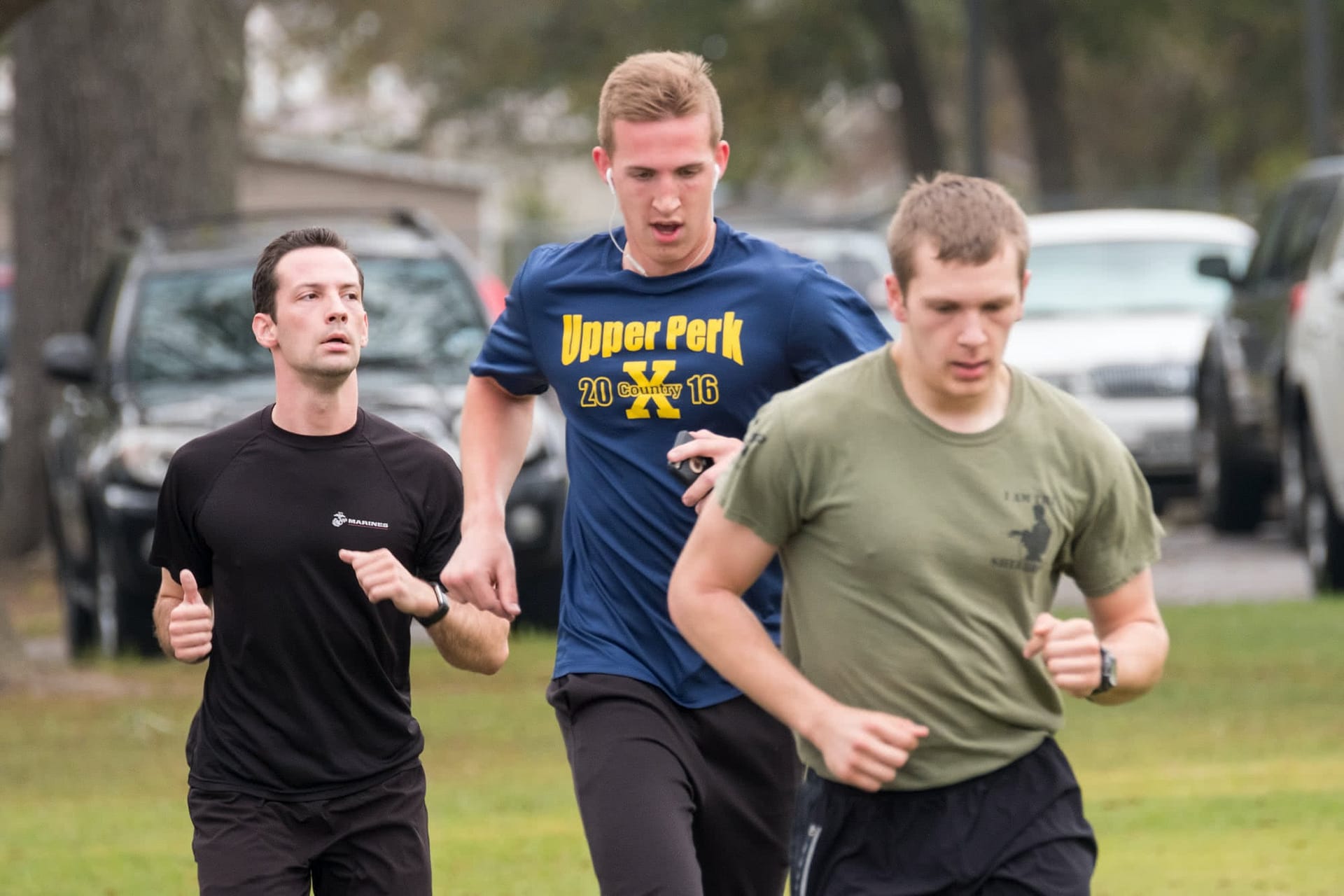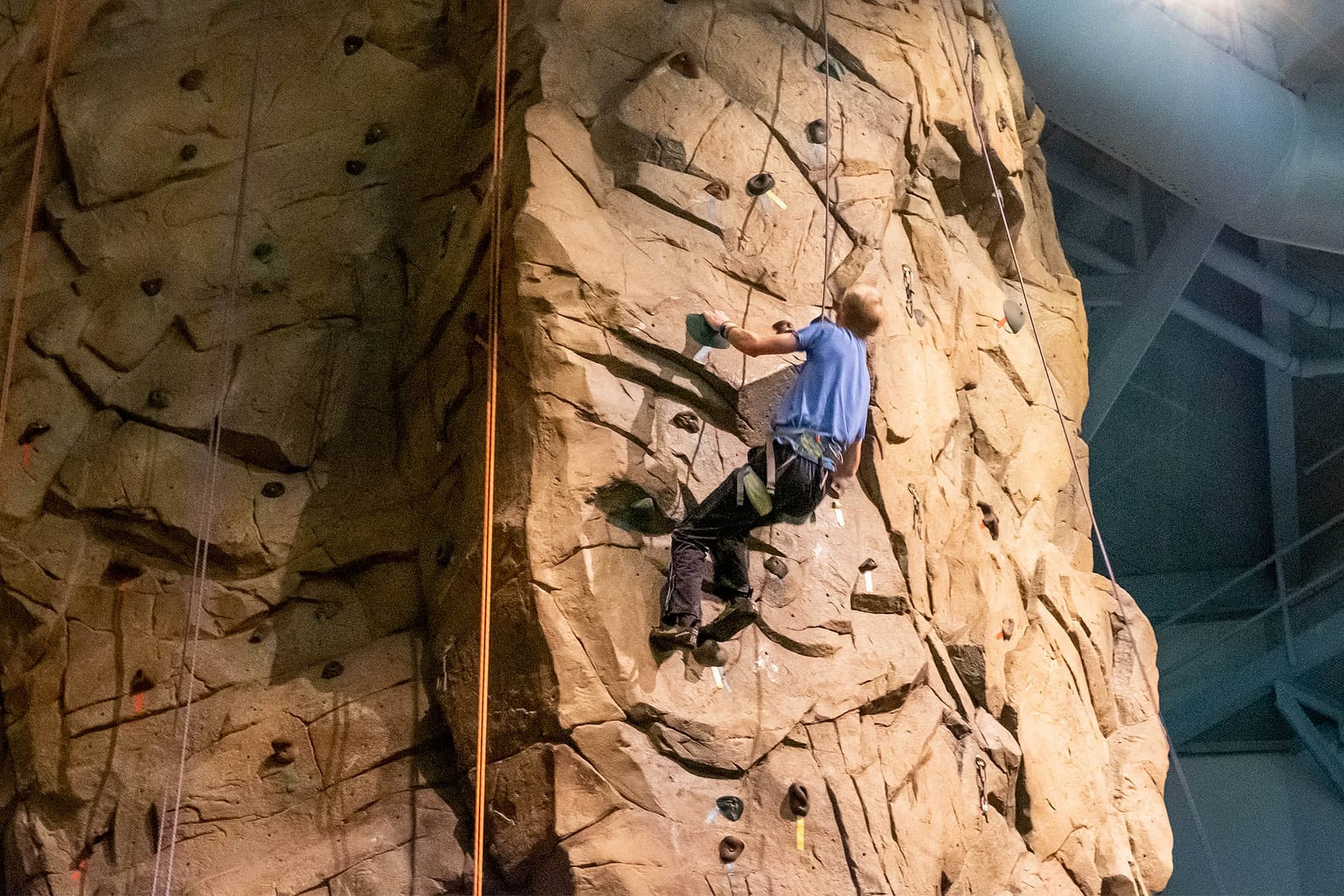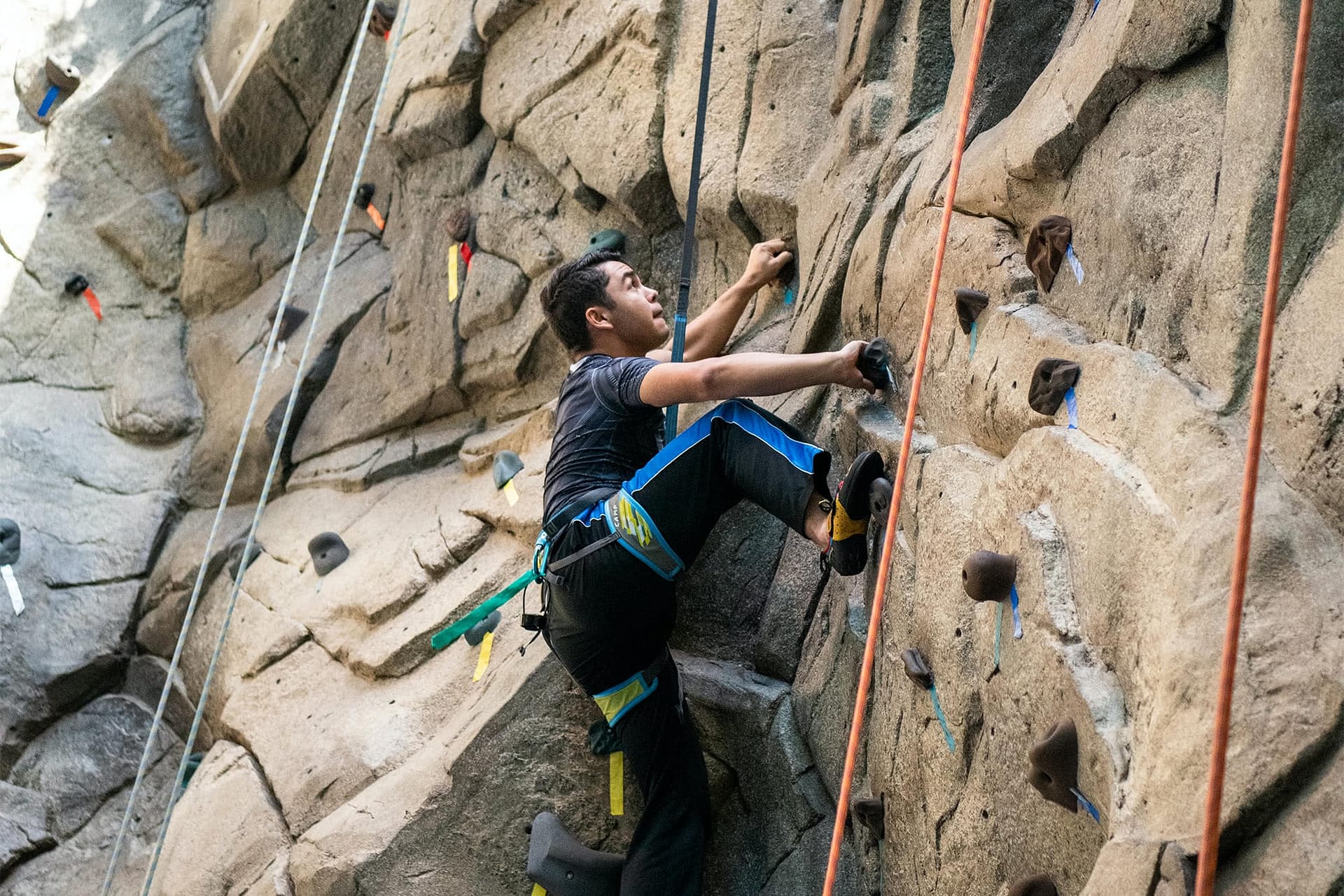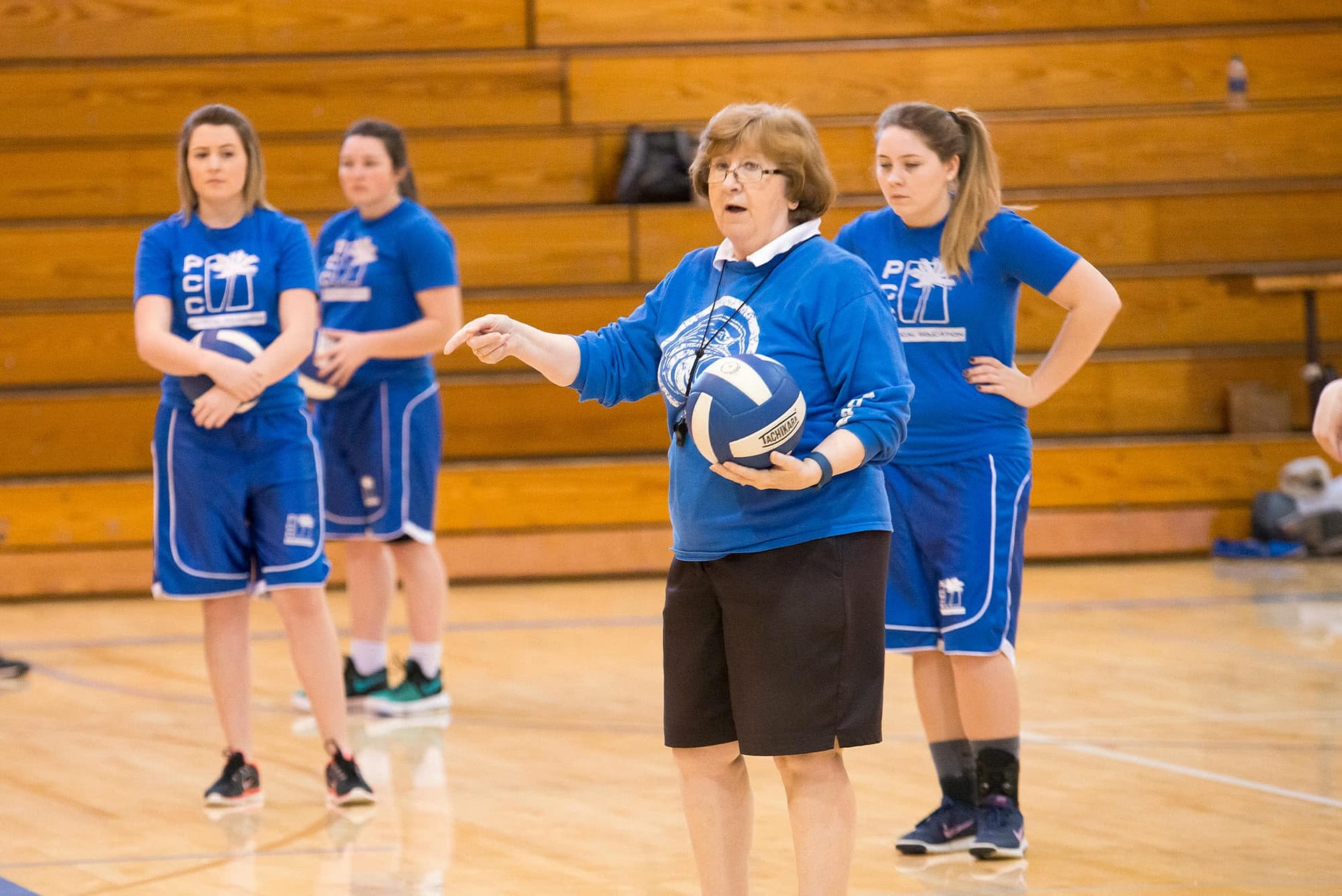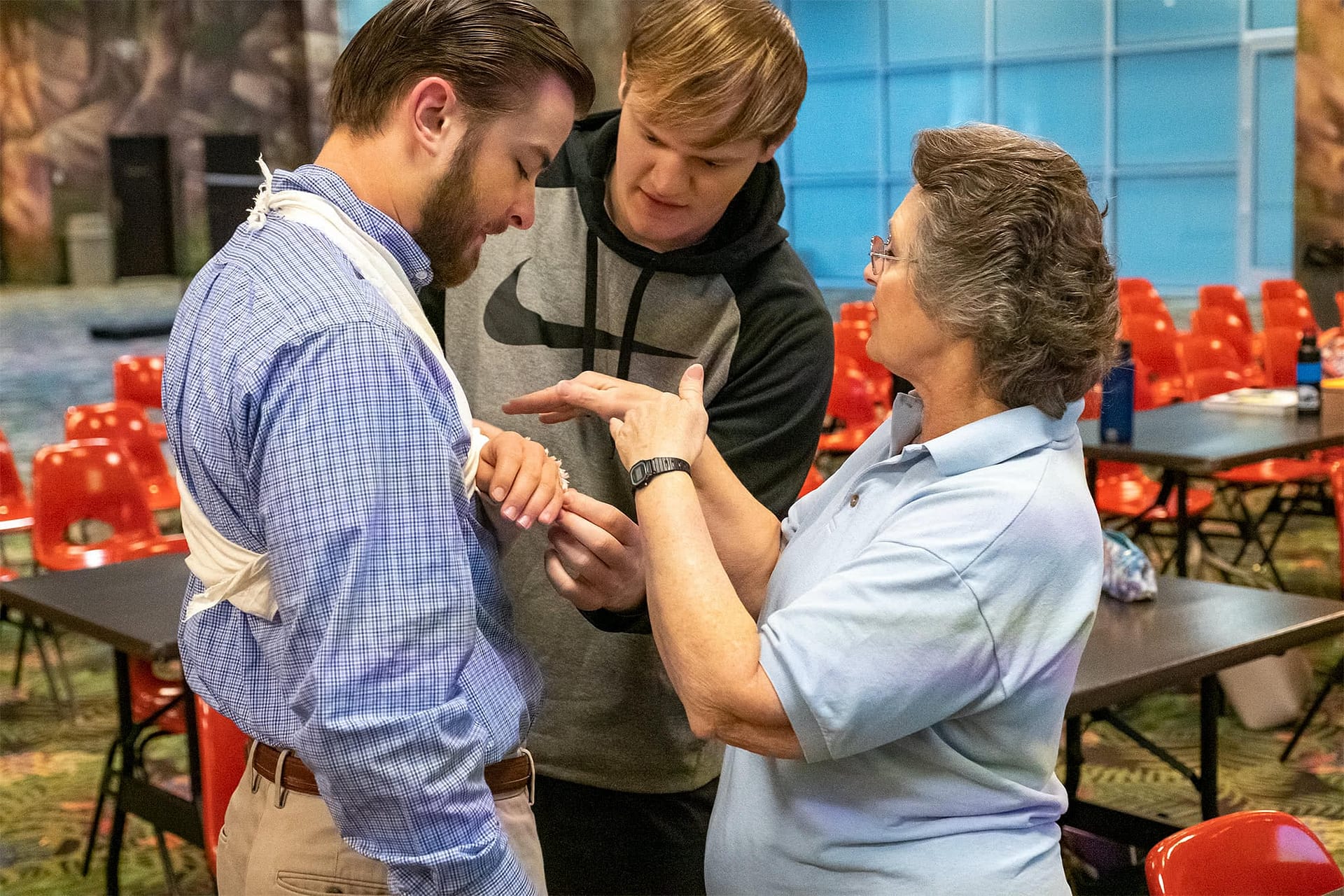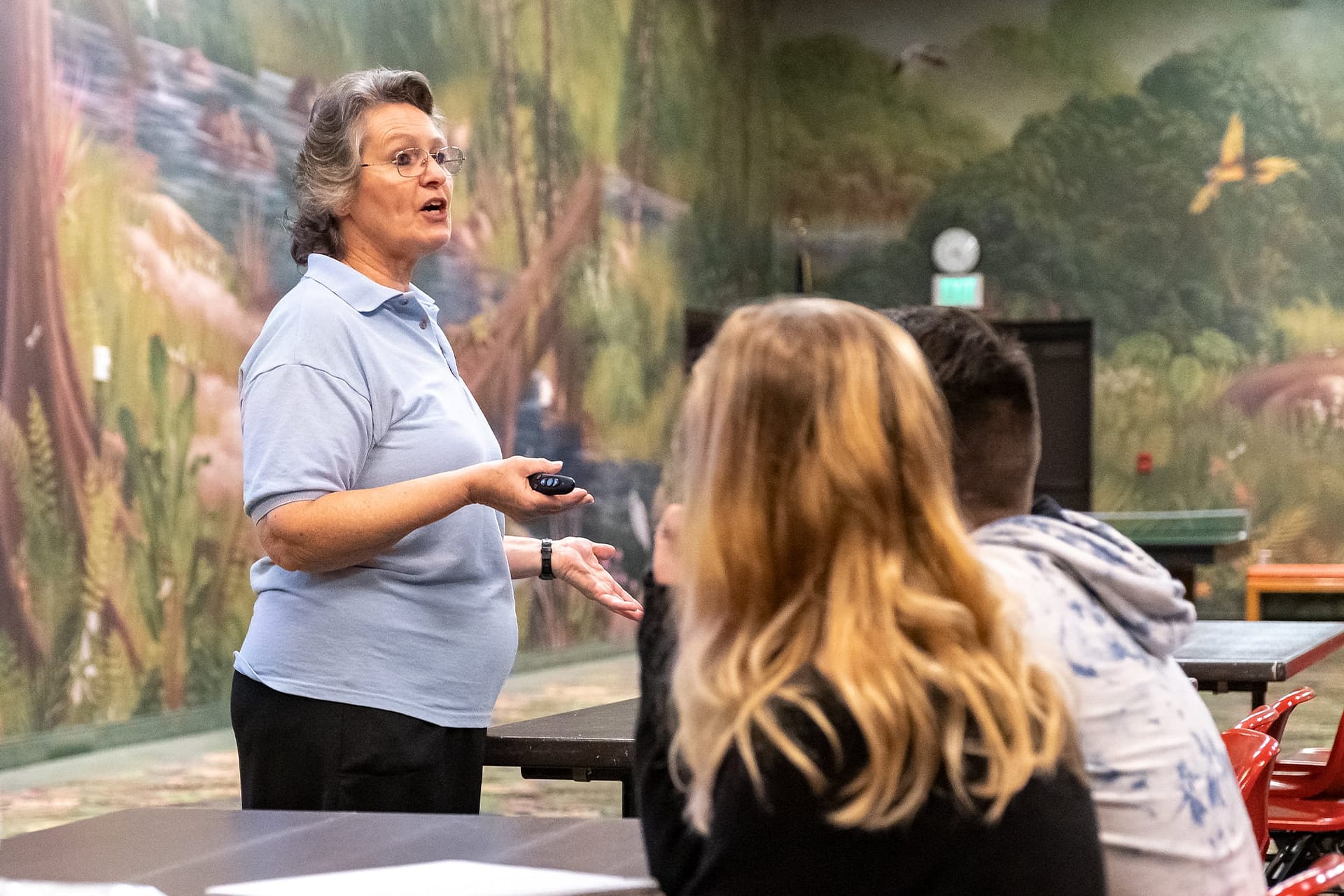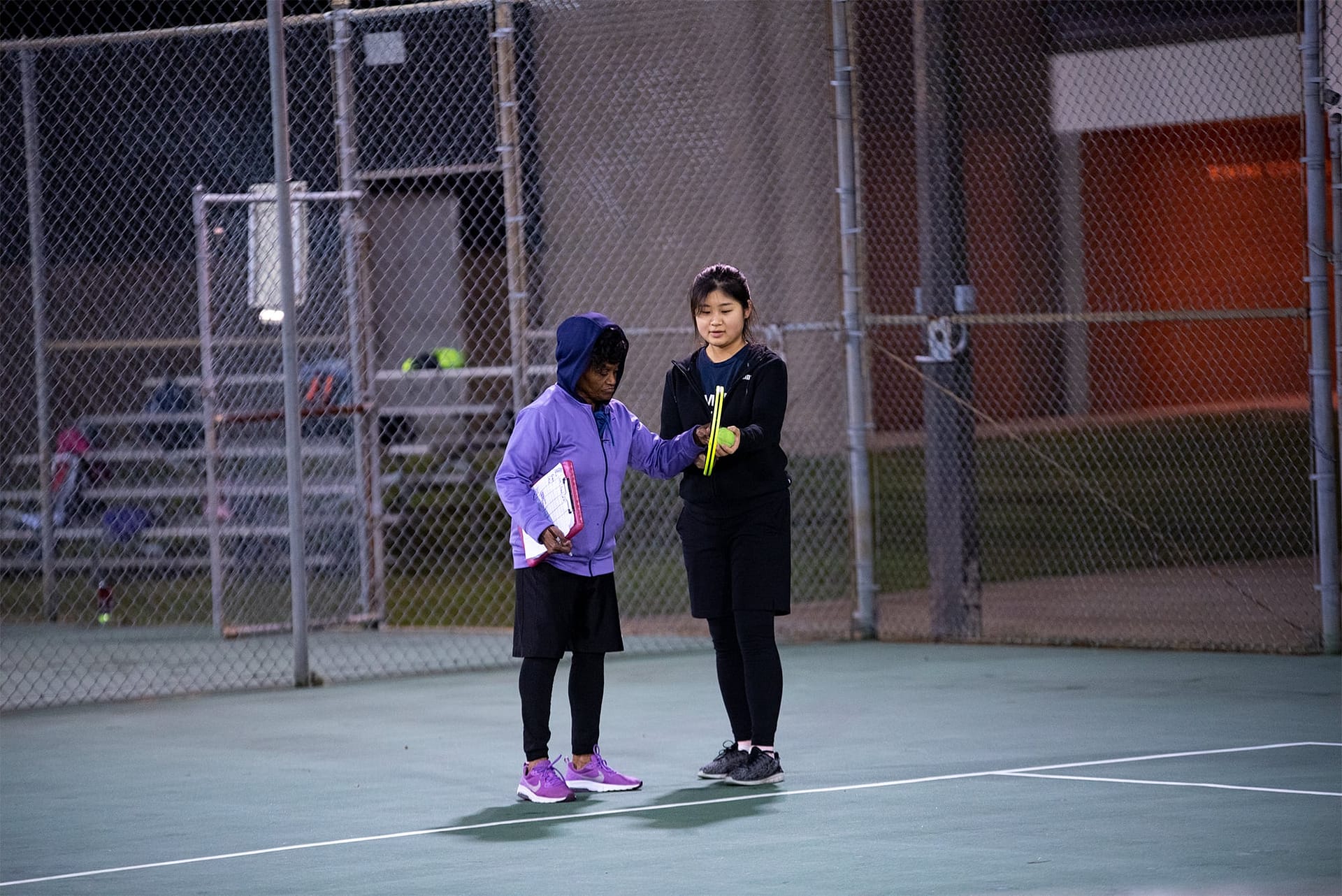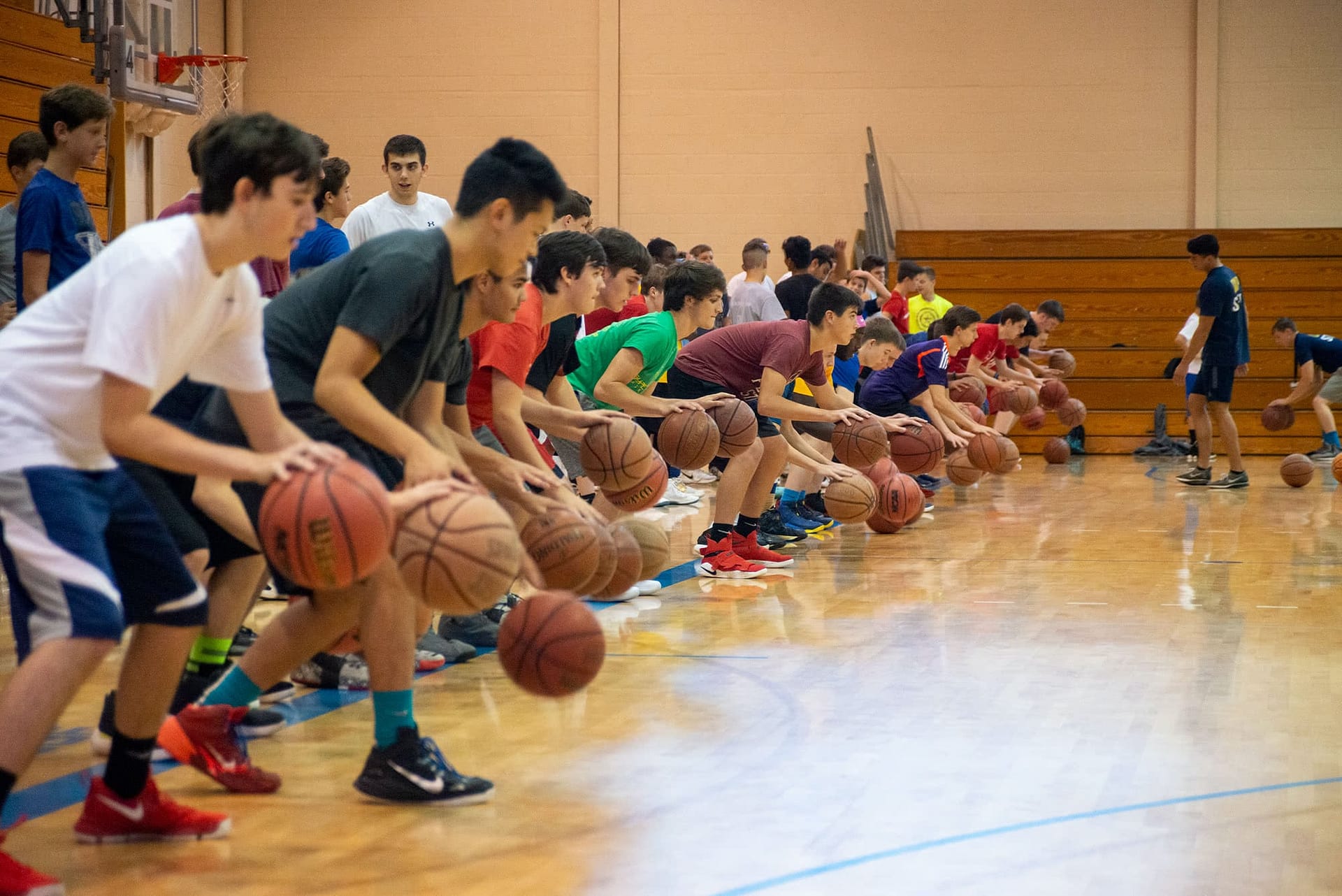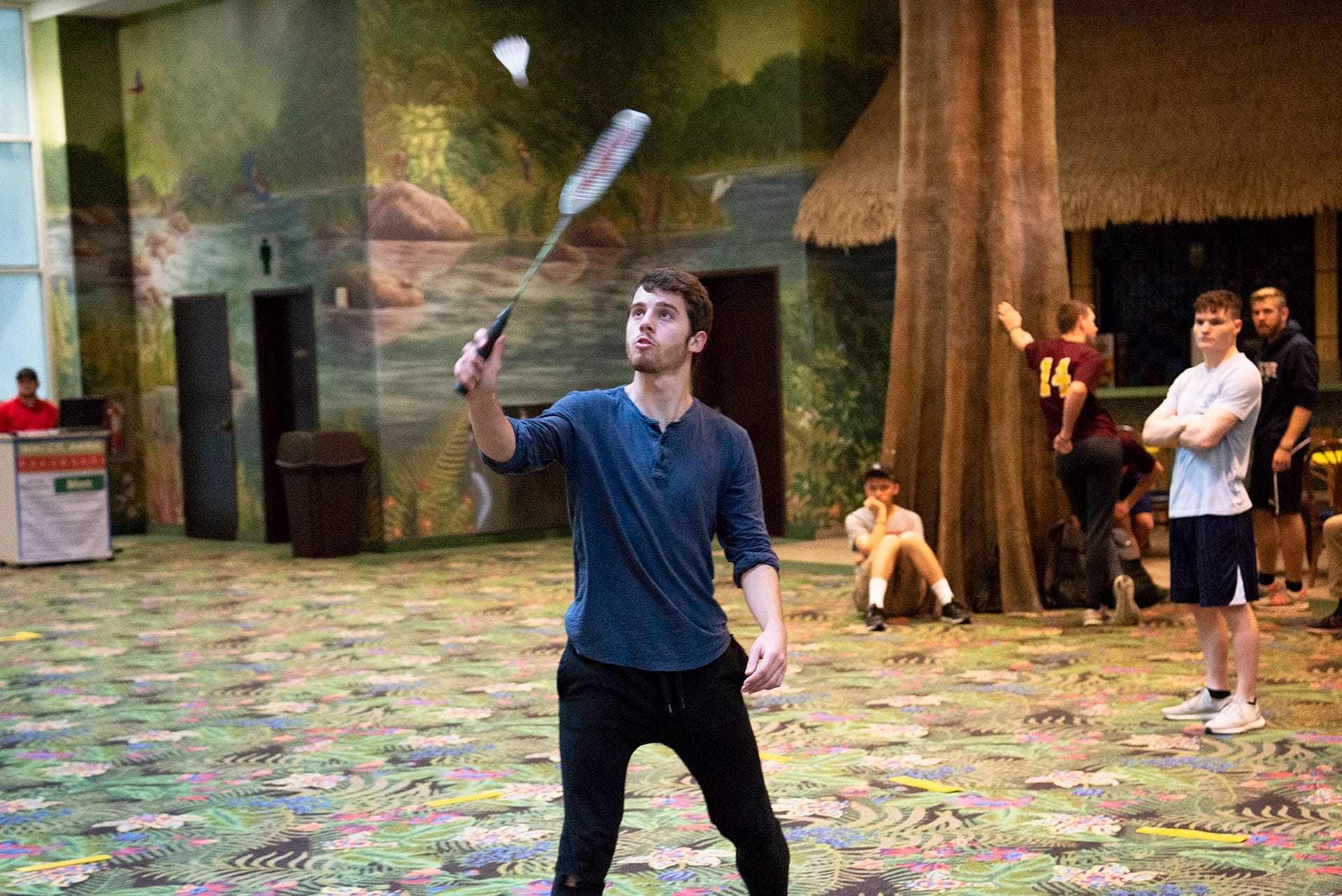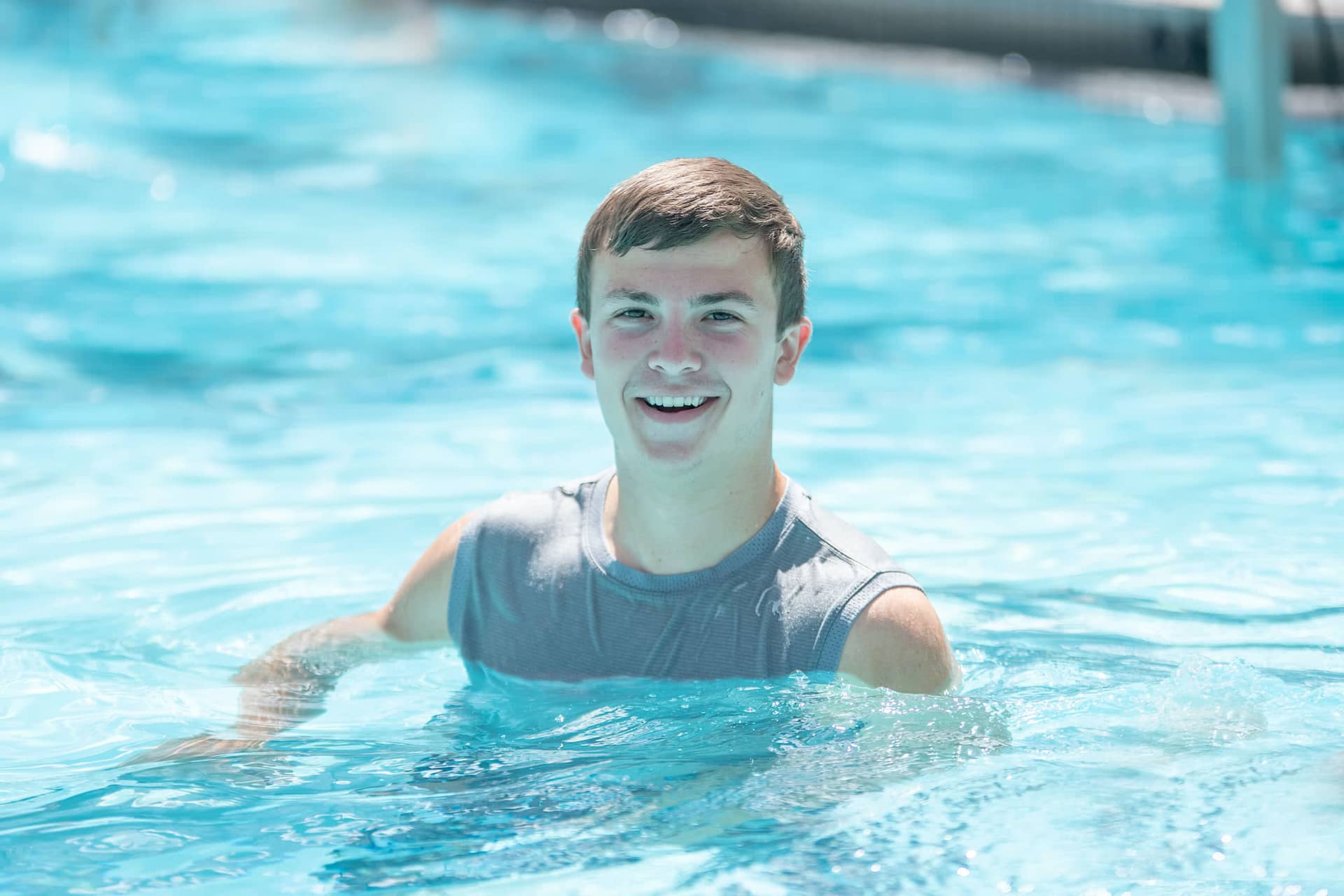In the Sports Center, students are clinging to the walls of the largest indoor simulated rock wall in the Southeast, learning how to climb with even the smallest of holds. Other students, 17 miles away at West Campus, have been paired off on catamarans, eager to use their skills to sail on the salty Perdido Bay.
Learning outside a classroom is quite common for students taking a physical education course. While certain P.E. courses are required for those with a concentration in physical education, many students have enjoyed learning the skills of an activity course for college credit as an elective.

Physical education activity courses show students the ropes of a sport or activity and allow them to become moderately proficient at that activity. “There is lots of hands-on and constant feedback to the students regarding the skills they’re learning,” said Adrienne Wilson, who currently teaches Swimming/Physical Fitness (PE 160/170), and has taught a variety of other activity courses including Beginning Tennis (PE 201), Beginning Basketball (PE 121/131), and Beginning Volleyball (PE 107). “I emphasize the basic fundamentals and rules of each activity and reinforce that with drills, activities, and games. It allows students to spend that time enjoying the sport for what it is.”
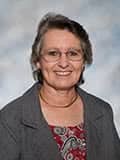
Some classes help students feel comfortable with a sport or activity while others, such as lifeguarding, can help students receive practical training in a specialized area. “Lifeguarding class (PE 364/374) leads to certification and a possible job where Red Cross lifeguards are hired,” said Dr. Gaylen Waters, lifeguarding instructor. “All activity classes are not just playing games. Students learn to perform skills, play by the rules, as well as learn the terminology for that sport. There are written quizzes, tests, and skills test components in the classes, but when the semester is over, students should be able to take their skills and knowledge and play on recreational teams and enjoy what they are doing.”

While Craig Lewis’s current classes have mostly been lecture-based P.E. courses such as sports physiology and kinesiology, he has regularly taught men’s swimming and physical fitness. In this class, students focus on swimming instruction while the campus pool is open and physical fitness during the colder months of a semester when the pool is closed. Over time, he’s seen how his students have personally benefited from the class. “Last semester, I had a young man who didn’t know how to swim and was not really comfortable in the water,” he said. “By the end of our seven weeks of swimming instruction, he had learned two swimming strokes and was much more comfortable in the water.”
It’s not uncommon for some students to continue working on their skills in their free time after finishing a physical education course. “Many times, I have students take a class like Racquetball (PE 125), and then they learn the rules [or] strategy of the game. What they then realize is that they enjoy the game, and they will tell me later that they are still playing weekly,” said Coach Lewis. “Students need to learn the benefits of exercise so they can play these sports for a lifetime.”

During his first semester, freshman Austin Lewis (FL) took swimming and physical fitness and appreciated the differences in the experience outside of a traditional classroom. “We learned some of the basic swimming strokes in swimming and also survival strokes. In fitness, we learned a well-rounded workout regimen and learned some sports, too,” he said. “The atmosphere is more relaxed and enjoyable as an activity-based class. I enjoyed the mix of learning and competition in both swimming and fitness to keep it interesting.”
The atmosphere of activity courses differs from other classes, giving students the chance to meet and interact more closely with their classmates. “The attitudes and habits they develop now as young adults will be the lifestyle and patterns they will have later in life,” said Aaron Ainsworth, who teaches Weight Training (PE 243/293). “The students interact more and feel more at ease when not having to write or type notes the entire 50 minutes. Those students who are engaged and desire to improve will improve strength and power for sure in the weight training class.”
When discussing the benefits of taking a physical education activity course, Coach Lewis explained it best—“Frequent exercise is a great way to help relieve stress,” he said. “Why not get college credit for it while you exercise?”

